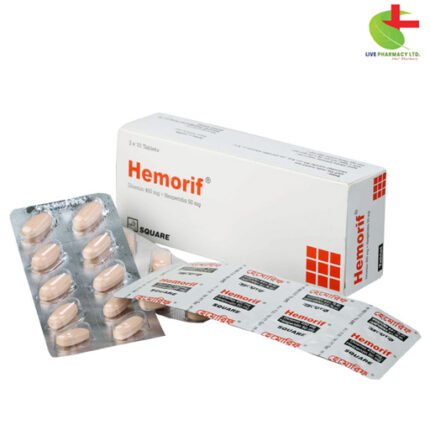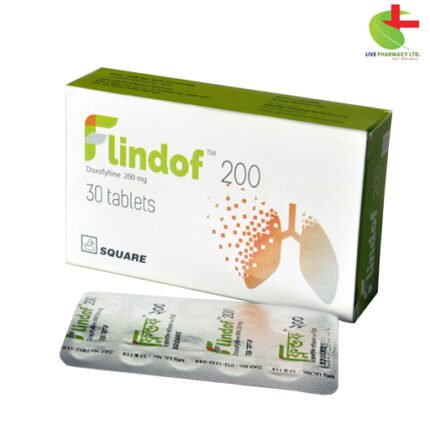Motigut 10
35.00৳ Strip
- Domperidone provides relief for dyspeptic symptoms like nausea, vomiting, and gastric discomfort.
- Its unique mechanism targets gastrointestinal motility without affecting the central nervous system.
- Ideal for managing conditions such as gastroesophageal reflux, delayed gastric emptying, and functional dyspepsia.
- Restores digestive comfort and improves quality of life.
- Trust Domperidone for reliable relief from gastrointestinal disturbances.
 Brand
Brand
|
Square Pharmaceuticals PLC |
|---|---|
 Generics
Generics
|
Domperidone Maleate |
Indications
This medication addresses a range of dyspeptic symptoms often linked with conditions like delayed gastric emptying, gastroesophageal reflux, and esophagitis. These symptoms may include:
- Epigastric fullness
- Abdominal distension
- Upper abdominal pain
- Eructation and flatulence
- Early satiety
- Nausea and vomiting
- Heartburn, with or without regurgitation
It’s also effective in managing non-ulcer dyspepsia and acute nausea and vomiting stemming from various causes, including functional, organic, infectious, dietary, or induced by treatments like radiotherapy or medications, even in cases of migraine or dopamine-agonist induced nausea and vomiting in Parkinson’s disease.
In radiological studies, it aids in speeding up barium transit in follow-through radiological procedures.
Pharmacology
The key component, Domperidone, functions as a dopamine antagonist primarily targeting receptors in the Chemoreceptor Trigger Zone (CTZ) and stomach. Its gastroprokinetic action stems from blocking dopamine receptors, regulating gastrointestinal motility without affecting central nervous system functions. Domperidone restores normal motility and tone in the upper gastrointestinal tract, aiding gastric emptying, enhancing peristalsis in the antrum and duodenum, and regulating pyloric contraction. It also improves esophageal peristalsis and lower esophageal sphincter pressure, preventing gastric content regurgitation.
Dosage & Administration
For optimal effectiveness, Domperidone should be taken 15-30 minutes before meals and, if needed, before bedtime.
- Adults: 10-20 mg (1-2 tablets or 10-20 ml suspension), every 6-8 hours daily, not exceeding 80 mg daily.
- Children: Dosage varies based on weight and condition, generally ranging from 0.2-0.4 mg/kg every 6-8 hours daily.
Interactions
Domperidone’s efficacy may be affected by concomitant use of certain medications, like anticholinergic drugs or those inhibiting CYP3A4 enzymes. Such interactions can influence its bioavailability and effectiveness.
Contraindications
Domperidone is contraindicated in patients with hypersensitivity to the drug, neonates, or those with conditions like gastrointestinal hemorrhage, obstruction, or perforation, as well as prolactin-releasing pituitary tumors (prolactinoma).
Side Effects
While side effects are rare, they may include transient intestinal cramps or, in exceptional cases, extrapyramidal phenomena, which typically resolve upon discontinuation. Some individuals may experience allergic reactions, rash, or urticaria.
Pregnancy & Lactation
While animal studies haven’t shown teratogenic effects, caution is advised during the first trimester of pregnancy. Nursing is generally not recommended unless the benefits outweigh potential risks.
Precautions & Warnings
Special caution is advised in children and patients with hepatic impairment, and regular monitoring is recommended for patients on prolonged therapy.
Overdose Effects
Symptoms of overdose may include drowsiness, disorientation, and extrapyramidal reactions, especially in children. Management includes administration of activated charcoal and close observation.
Therapeutic Class
Domperidone belongs to the class of motility stimulants and dopamine antagonists, aiding in gastrointestinal motility.
Storage Conditions
Store Domperidone below 30°C, protected from light and moisture, and out of children’s reach.
Chemical Structure
Domperidone’s molecular formula is C22H24ClN5O2.
Common Questions
Visit for more information about Domperidone’s usage, side effects, and precautions. The team is dedicated to providing comprehensive support and guidance.
Quick Tips
- Take Domperidone before meals as prescribed.
- Be cautious while driving or operating machinery.
- Avoid alcohol consumption.
- Stay hydrated to manage dry mouth, a possible side effect.
- Consult a doctor if symptoms persist beyond 7 days.













Reviews
There are no reviews yet.